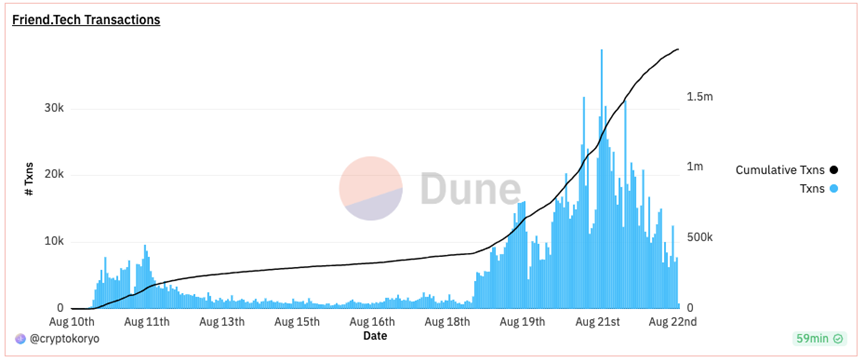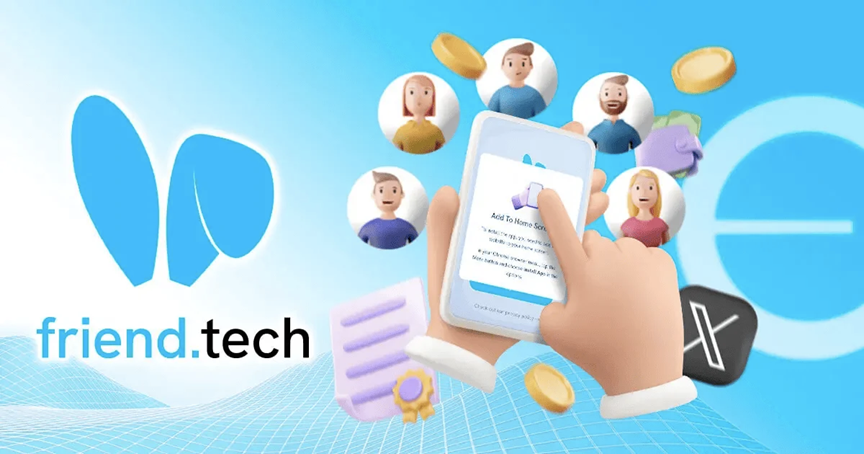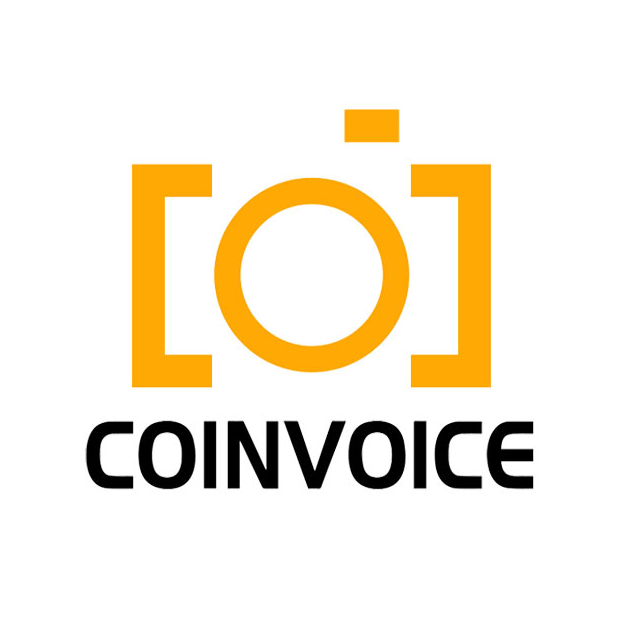Original author: Daniel Li, CoinVoice

As one of the high-profile projects on the current Base chain, friend.tech has shown great potential. In less than two weeks, its transaction volume has exceeded 25,633 ETH, and has attracted high-profile celebrities and venture capital companies to join. These additions have injected more exposure, social influence and trust support into Friend.tech, making it a highly anticipated new favorite in Web3 social networking. However, behind the popularity of Friend.tech, people are paying more attention to its future direction. Past SocialFi applications such as BitClout have proven that the popularity of early products does not mean that they will go further in the future.
Although Friend.tech is very good, it is still in the early stages of development and has not yet matured. Therefore, we need to deeply analyze Friend.techs innovative characteristics, competitive advantages, and current disadvantages to help us more accurately evaluate Friend.techs future development potential.
What is Friend.tech and why is it popular?
Friend.tech is a DApp based on the Base ecosystem. It is strongly bound to Twitter, allowing users to buy and sell user shares (Share) on Friend.tech through Ethereum on the Base chain. Its main functions are similar to WeChat groups and Telegram groups, but its core lies in entering and exiting group chats organically. Users can choose to join a group chat and pay a minimum price to obtain shares in the group. If they want to exit the group chat, they can sell their shares.
Joining a group chat not only fulfills a social need but also has investment potential. As the number of people joining a group chat gradually increases, the total number of group shares increases, and the base price of each share will also increase. This means that joining a group chat not only satisfies social needs, but also allows you to enjoy investment returns. Therefore, speculative users often buy shares in other group chats or the group chats they belong to that they think have potential in the early stage.
According to Dune Analytics, in less than 24 hours since Friend.tech launched its beta version, it attracted 7,860 users and 4,400 ETH ($8.1 million) in transaction volume, with more than 126,000 transactions. This far exceeds OpenSea’s transaction volume during the same time period. So far, Friend.tech has attracted the attention of more than 100,000 users. Well-known KOLs Frank DeGods and Gainzy 222, trader RookieXBT, and NBA player Grayson Allen have also joined the craze.

The reason why Friend.tech is so popular is that market opportunities and marketing strategies are indispensable. In the wake of the GameFi craze, the industry is looking for the next app to break traditional boundaries. As a field with both traffic and encryption attributes, SocialFi is regarded as one of the most promising directions for breakthroughs. There have also been long-standing efforts to use blockchain to create a decentralized version of Facebook (Meta) or Twitter (X), letting users own their data, and creating an on-chain reputation system for social use cases. Friend.tech was born to meet this market opportunity and need.
Secondly, as a decentralized social application product, Friend.tech is also very effective in project marketing. Friend.techs marketing strategy combines the strengths of others. They focus on short-term and high-frequency intensive public relations strategies, whether it is content The techniques, timing and community strategies are all classic. The early focus was on creating a sense of mystery, which aroused users’ curiosity. Then, they relied on the cold start of orders from well-known KOLs, and used these influential figures to promote their products and attract more users to participate. At the same time, they cleverly used invitation codes for hunger marketing to stimulate users desire to participate and guide more people to join. In addition, plus the endorsement of top VC. The clever use of all these strategies has created Friend.tech’s current hot situation.
Friend.tech: product features and gameplay
Friend.tech is an innovative Web3 application that leads changes in the social field. It not only has advantages in terms of marketing promotions, but also demonstrates its unique charm through carefully polished product characteristics. Friend.tech learned valuable lessons from BitClout when implementing its KOL monetization solution. Compared with the fate of BitClout, which was resisted by the community due to the forced launch and finally integrated into the Deso project, Friend.tech innovated with the starting point of protecting user rights and optimizing user experience. It adopts the method of proactively inviting KOLs to settle in, and uses Base chain L2 technology to greatly improve the user experience.
Friend.tech also shows innovation in product features and gameplay. The four innovative features introduced include"social tokenization"、"stock trading"、"fan economy"etc., bringing users a brand-new social interaction experience. These functions are all based on decentralization, using algorithms and market-based methods to quantify and release social value, creating new opportunities for users.

Social Tokenization: Friend.tech quantifies a users popularity and engagement on Twitter as a social token by linking to a users Twitter account. This social tokenization mechanism makes user influence a measurable and tradable asset, providing a way for users to directly participate and benefit from their influence. Users can turn their influence into tradable assets with real value through the social tokenization mechanism, further expanding the scope of their social influence.
Stake Trading: Friend.tech allows users to use ETH to purchase shares of other users’ social tokens, which represent a stake in a user’s popularity and interactions on Twitter. Users can freely decide when to buy or sell shares based on market supply and demand, and earn profits from it. This share trading mechanism provides users with a way to invest and trade social influence, allowing them to participate in the economic system of the social network and share in the growing value of the social influence they possess.
Fan Economy and Influence Game: Friend.tech has created a unique influence game with the fan economy at its core. Users can use ETH to buy other users shares, so as to obtain the right to talk to the purchased person, that is, the friend position. Buyers can chat one-on-one with shopees to support and engage with their favorite social influencers. This design stimulates users to actively participate in the interaction and development of social networks, transforms social influence into actual social interactions, and enhances the connection and activity among users.
Transaction fees and revenue sharing: Friend.tech charges additional transaction fees during the transaction process, part of which goes to the protocol and part to the holders of the shares being traded. For the social influencers (KOLs) whose shares are purchased, a certain percentage of transaction fees can be obtained for each share sale. This design encourages KOL to increase the frequency of transactions to obtain higher returns, and promotes the activity and liquidity of the entire social network.
How far can Friend.tech go in the future?
With its social + economic innovation model, Friend.tech brings users a new experience of interaction and value realization, setting off a new wave of subversion in the Web3 social field. It opens a new social world full of vitality and opportunities for users. Whether they are KOLs or ordinary users, they can obtain richer social experiences and economic benefits through this platform.
However, behind Friend.techs superficial prosperity, we can see that its development path is still full of difficulties. Back to the product itself, Friend.tech still has many problems to be solved: its sustainability is doubtful, its business model needs to be tested, and it is not attractive to top KOLs. These issues will affect whether Friend.tech can go further in the short term.

First, many were skeptical about the sustainability of Friend.tech. The issues they questioned included the lack of a clear privacy policy, the need to deposit Ethereum when registering, and the unclear project roadmap. Due to these factors, there are doubts about the safety and long-term development of Friend.tech. In particular, the lack of a clear privacy policy has raised concerns about the security of personal information, thereby making users hesitant to provide personal information to Friend.tech.
Secondly, Friend.tech’s business model needs further verification. The application relies on the economic interaction between KOL and fans to achieve monetization. Fans can gain the power to talk to KOL after purchasing shares in the KOL. But the problem is that shares do not guarantee a response from the KOL. It all depends on the KOL’s personal wishes. Under this model, KOLs have no obligation to respond to fans. Therefore, Friend.tech has the dilemma of paying to send a message may not result in a reply, similar to sending a private message on Twitter but the other party is not responsible for replying. This makes the function of Friend.tech more like a decoration. Fans can only realize their interests by constantly purchasing new shares and waiting for others to take over. The sustainability of the entire monetization model is questionable.
In addition, there are doubts about whether Friend.tech can attract enough KOLs to join. There are currently many KOLs on Twitter sharing Friend.tech invitation codes, but for the top KOLs in the industry, they do not lack monetization channels. What they are more worried about than making money is that after joining Friend.tech, the tokens may fluctuate violently. Cause dissatisfaction among fans, thereby affecting their influence on other platforms (such as Twitter). For small and medium-sized KOLs, their influence is limited. Even if they join Friend.tech, it is difficult to obtain considerable income through the platform.
In addition to the above problems, Friend.tech also has a potential hidden danger:
Uncompetitive product features: Friend.tech suffers from serious interface glitches and insufficient features, which directly affects the user experience. For example, chat content loading issues and the lack of common features (such as photo sharing, etc.) limit users from getting a complete social experience on Friend.tech. Although Friend.tech subsequently expanded its community functions and provided exclusive VIP content for KOLs, in fact, traditional platforms such as Telegram, WeChat, and DIS groups have been able to meet these needs and have more mature and complete functions. Stickier. Compared to these platforms, Friend.tech has no clear advantages.
Lack of transparency and planning: Friend.tech has been online for nearly two weeks, but the project party has not yet announced the project’s white paper and roadmap. This creates an impression of ambiguity and lack of transparency, undermining confidence in the future development of Friend.tech. Users and investors expect a clear understanding of Friend.tech’s vision, plans and direction, and a lack of this information can lead to doubts and a sense of uncertainty.
Compliance risk: With the rapid development of Web3, regulatory agencies are paying increasing attention to cryptocurrency and blockchain technology. Friend.tech’s business model is somewhat similar to the stock market, where crypto influencers can share proceeds with buyers to increase trading volume and price. This puts Friend.tech at risk of being deemed unregistered securities by the SEC in the future.
To sum up, as a Web3 social application, Friend.tech’s pricing model of personal influence tokens shows a trend of FOMO. Through good airdrop expectations and KOL’s marketing publicity, Friend.tech may be able to maintain a certain degree of popularity in the short term. However, this craze that relies solely on emotion to drive it is unsustainable in the long run. Once the heat cools, users will return to focusing on the product itself and begin to notice Friend.techs own flaws. If Friend.tech cannot successfully realize the real connection between fans and KOLs and optimize its product structure and business model, its future growth space will be greatly limited. In the future, Friend.tech may make the same mistake as BitClout and fail to achieve lasting development.



